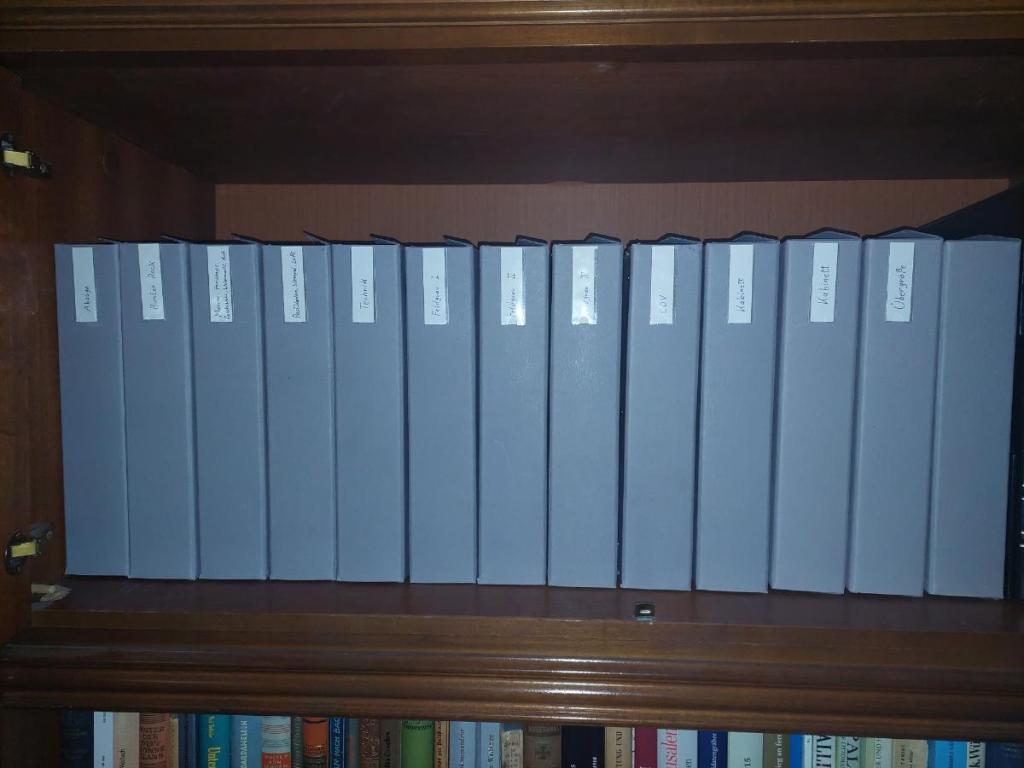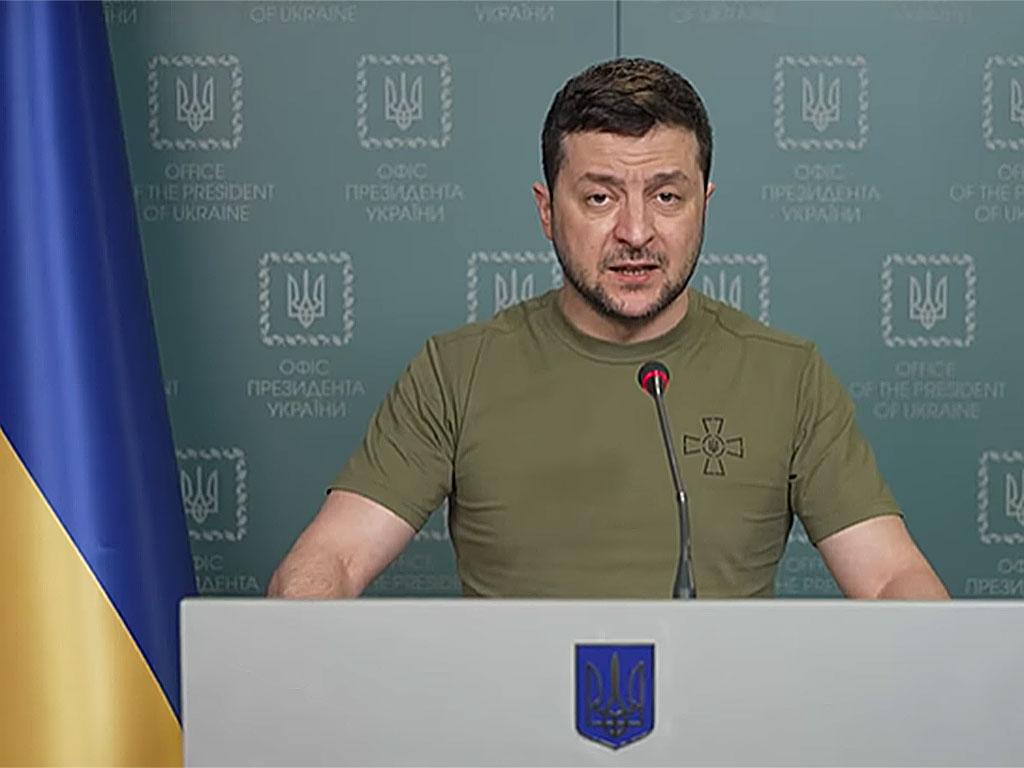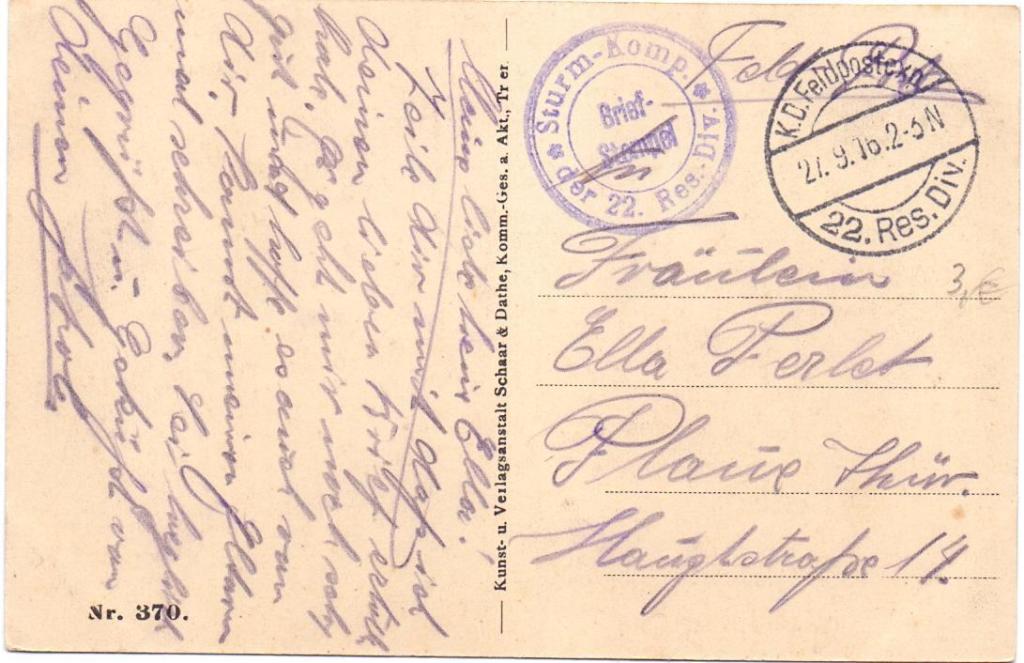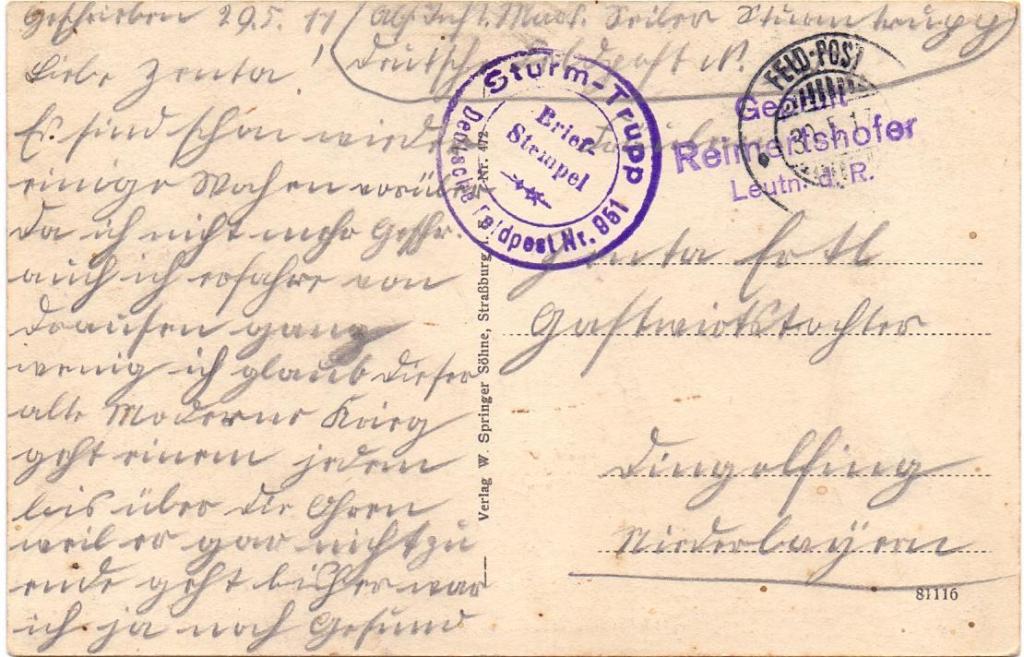-
Posts
3,101 -
Joined
-
Last visited
-
Days Won
6
Content Type
Profiles
Forums
Blogs
Gallery
Events
Store
Everything posted by The Prussian
-
Hello! I love this video! But which english accents do we hear? 1) Canadian 2) ? 3) South Africa 4) ? Thanks a lot!
-
Hello! In Germany I order the stuff for my photos and documents here: https://archivbox.com/en/?nbnet=0 Please browse the site, you´ll find a lot informations and the articles are not too expensive (if you don´t give a toss about the shipping costs...) It's not the prettiest system, but it's quite cheap, it's acid-free, and it does the job. With the transparencies (no matter if for documents or two or four divided), there is a separating foil in the middle, so that you can insert two photos without the backs touching each other.
-
Hello! It´s not so difficult... The photo-studio (Atelier Max Seyffarth) is from Saarbrücken. Parts of Feldartillerie-Regiment v. Holtzendorff Nr.8 was in that garrison. Two Abteilungen (Detachments) were in Saarlouis and the mounted detachment was in Saarbrücken. He wears a black plume, which was worn only by a couple of Field-Artillery units, but by all mounted detachments and by all soldiers of the regimental staff! The three batteries of the mounted detachment were in Saarbrücken since April 1, 1898. According to the white Troddel (bayonet-, or in this case sword-knot) for mounted troops and the absence of rank insignia, here we have a gunner of: 1st battery/mounted Detachment of Field-Artillery-Regiment N°8 in Saarbrücken since 1898 in parade-dress. Sword-knots of the mounted batteries: Location 1914: Red circle: Saarlouis with I. and II. Detachement and their staffs. Yellow circle: Saarbrücken with regimental staff and mounted Detachment (R = reitend = mounted) Order of the transfer of the detachment: War Ministry. Berlin, March 3, 1898 N°53 Transfer of the mounted detachment Field Artillery Regiment von Holtzendorff (1st Rhenish) No.8 In execution of the Most High Cabinet Order of July 28, 1890 - Army Ordinance Gazette page 154 regarding 166 - the transfer of the above-mentioned detachment from Saarlouis to Saarbrücken will take place on April 1, 1898. N° 860/2.98. A.1. by order of, v. der Boeck (Major-General v.der Boeck was member of the National-Defence-Commission and director of the General War Department)
- 8 replies
-
1
-
- unidentified
- uniform
-
(and 3 more)
Tagged with:
-

Oberstleutnant Georg Sick
The Prussian replied to Hamburger's topic in Deutsche Kaiserreich: Man spricht Denglish
Hello! Ah, ok. Bernhard already translated it. Well, to the 81.Inf.Brig. In 1914 there were Inf.Rgt.162 and 163, in 1918 Res.Inf.Rgt.76 and 1./Res.Hus.Rgt.6 were added. Commanders in the great war were: 2.8.14-10.12.14: Karl v. Lewinski 10.12.14-1.4.16: Carl v. Wichmann 1.4.16-15.2.17: Wilhelm v. Beczwarzowski 15.2.17-21.2.19: Ernst v. Heynitz Leaders: Gustav Beyer (no dates known) Georg Sick (30.6.-25.7.18) -

Oberstleutnant Georg Sick
The Prussian replied to Hamburger's topic in Deutsche Kaiserreich: Man spricht Denglish
Hello!. The place in the first card should be "Moorslede", in the second one "Sailly". In that time, the Regimental staff and the "Rest-Bataillon" were in Moorslede. (regimental history, page 188). The "Sailly" is "Sailly-en-Ostrevent". Unfortunately I can´t read the cards... GreyC, please...😁 https://www.google.com/maps/dir/Moorslede,+Belgien/Sailly-en-Ostrevent,+Frankreich/@50.5904487,2.7791194,10z/data=!3m1!4b1!4m14!4m13!1m5!1m1!1s0x47c33361ff2b0101:0x457e728cb4c9419d!2m2!1d3.0633461!2d50.8912006!1m5!1m1!1s0x47c2b5144d4a1c09:0x40af13e8163d7d0!2m2!1d2.993226!2d50.289526!3e2 -

Oberstleutnant Georg Sick
The Prussian replied to Hamburger's topic in Deutsche Kaiserreich: Man spricht Denglish
Hello! Congratulations! That´s a bull´s-eye hit! The question is: Georg Sick served with different units during the war. 2.8.14-5.1.15: Commander II./47 5.1.15-21.4.15: Commander Inf.Rgt.46 25.4.15-25.7.18: Commander Inf.Rgt.163 (simultaneously 30.6.18-25.7.18 Commander 81.Inf.Brig.) 24.7.18-end of war: Commander 59.Landwehr-Brig. Was your grandfather always with him or only in regiment 163? The regiment was generally under command of 81.Inf.Brig. (17.Res.Div.) Temporary during the Battle of the Somme: 4.7.16-14.7.16: 185.Inf.Div. 14.7.16-23.7.16: 6.Guard-Inf.Brig. (3.Guard-Inf.Div.) 28.7.16-3.8.16: 10.Inf.Brig. (5.Inf.Div.) Regimental Staff: From 29.9.15-13.1.16 the staff of the regiment 163 led a new temporary regiment: "Regiment Sick" This regiment was also called "Inf.Rgt.3 of the Division Hartz" Units: Staff/Inf.Rgt.163 III.Btl./Inf.Rgt.162 ½ MG-Comp./Inf.Rgt.76 III.Btl./Res.Inf.Rgt.31 I.Btl./Res.Inf.Rgt.86 (since 7.10.15) ½ MG-Comp./Res.Inf.Rgt.84 Note the Division Hartz was the 2nd bavarian Inf.Div. (I.bavarian army-corps, 6th army) Engagements: 25.9.15-13.10.15: Battle of La Bassée and Arras 14.10.15-25.12.15: Trench-battles in Flanders and Artois 14.-15.11.15: Battle of Thélus Since 25.12.15 the Division Hartz was under command of IX.Res.Corps. 14.1.16 the Regiment Sick came back to the Inf.Rgt.163 By the way... Here you can download the regimental history of Inf.Rgt.163 for free: https://digital.wlb-stuttgart.de/sammlungen/sammlungsliste/werksansicht?tx_dlf[id]=245&tx_dlf[page]=1&cHash=bbc62ab2144a0a2b35ed54b50b34d562 -

Oberstleutnant Georg Sick
The Prussian replied to Hamburger's topic in Deutsche Kaiserreich: Man spricht Denglish
Thanks a lot, Klaus! Good job! -

Oberstleutnant Georg Sick
The Prussian replied to Hamburger's topic in Deutsche Kaiserreich: Man spricht Denglish
Hi Hamburger! Unfortunately not. I only have military dates. Maybe you translate the german wiki-page? -

Oberstleutnant Georg Sick
The Prussian replied to Hamburger's topic in Deutsche Kaiserreich: Man spricht Denglish
Hello Hamburger! Georg Sick (* 17.10.1861, + 30.6.1937) Promotions: Leutnant: 17.10.83 Oberleutnant: 28.7.92 Hauptmann: 27.1.98 Major: 27.1.10 Oberstleutnant: 27.1.15 Oberst 27.1.18 Peacetime duties (Company/Regiment): Leutnant late 1883-1886: 6./27 1887-1889: 5./27 1890-1891: 12./27 1892: Adjutant II.Btl./27 Oberleutnant 1893: Adjutant II.Btl./27 1894-1896: 2./27 1897: 11./27 Hauptmann (1904: Order of the Red-Eagle 4, 1908: Service Award Cross) 1898: 11./27 1899-1909: 11./41 Major 1910-autumn 1912: Staff/47 Autumn 1912-1913: III.Btl./47 1914: II.Btl./47 Wartime duties: 2.8.14-5.1.15: Commander II./47 5.1.15-21.4.15: Commander Inf.Rgt.46 25.4.15-25.7.18: Commander Inf.Rgt.163 (simultaneously 30.6.18-25.7.18 Commander 81.Inf.Brig.) 24.7.18-end of war: Commander 59.Landwehr-Brig. 24.9.15: wounded: http://des.genealogy.net/search/show/424354 3.1.15: back to Inf.Rgt.47 20.5.17: Pour-le-Mérite German Wiki-page: https://de.wikipedia.org/wiki/Georg_Sick In Inf.Rgt.163 (with Pour-le-Mérite, both Iron Crosses and Military Merit Cross (Mecklenburg-Schwerin) -
Salut Juju! An interesting photo! I just wonder why they don´t wear the leather patches upon the trousers... The Sturmbataillon 5 (Rohr) had an Staff, 5 storm-companies, 2 MG companies, 1 trench-mortar company and 1 howitzer company. This was the former Infanterie-Geschütz-Batterie N°28, which was attached* to the Sturmbataillon. The Ersatz came from Ersatz-Abteilung/Gebirgs-Artillerie-Abteilung 5 and 6 * probably because of that they don´t have the leather-patches...
-

Queen Elizabeth II RIP
The Prussian replied to azyeoman's topic in Great Britain: Orders, Gallantry, Campaign Medals
I am very sad, that she has gone. God save the King! -
Thanks a lot and good luck for your country!
-
Hello! In the latest news I saw President Selensky with a stitched cross upon his t-shirt. Could it be the (above mentioned) Cossack Cross? Or is it just the cross of the Ukrainian Forces? Thanks a lot!
-
Hello! Was is hand-written? A photo of the word could help. The word "Regimentsgans" is unknown to me (I am German...) One possibility could be, that a regiment used a goose as a mascot.
-

Unknown Award/Ordensspange?
The Prussian replied to FALvonKyffhausen's topic in Wehrmacht Medals, Decorations & Awards
Hello! To me it looks more like a wounded badge -

Vor dem Feinde Newspaper
The Prussian replied to chuck's topic in Deutsche Kaiserreich: Man spricht Denglish
Hello! The clasp came out on Sept.20, 1918 -

Question about south american officers
The Prussian replied to The Prussian's topic in Rest of the World: Militaria & History
Hello! I am also looking for ranklists of the countries described above from the period until 1914. Thanks a lot! -

Klaus P. Schad
The Prussian replied to Klaus P. Schad's topic in Deutsche Kaiserreich: Man spricht Denglish
Hallo Klaus! Beste Grüße aus dem Ruhrpott!



.png.b60401a44c79ff253454a25bea50f072.png)
.png.bcd5ec45319841c64a74786477ad24de.png)
.png.53962695cee352d37c99a0c77728c1b1.png)
.png.c32f030a2ac3131b3b001fec5cdab980.png)
.png.fa5c9ee740e3218a5a804047fb2430ee.png)

.thumb.jpg.4f16b4b95c7c8934fc01624b4a7b648d.jpg)
-Kopie.jpg.4fcdbef3618c7ec10839086a9d7476df.jpg)
.thumb.png.6c36037a1bcb7d833a06030809792aaa.png)
.thumb.jpg.3c420456f18657b5b715761a3aaa9e6c.jpg)
.thumb.jpg.8237b5bd63a2e20cc9592ebfc8157f1f.jpg)
.thumb.jpg.4498031580e35a0e2c5a5a4fb5e90ab9.jpg)
(3).thumb.jpg.d27ba0d591dbac1d50b23d10b77451a5.jpg)
.thumb.jpg.db712c1f37a3dff409f59358e728383c.jpg)
.thumb.jpg.1d8fd1fa03036913e79f91b044db3574.jpg)
.thumb.jpg.158e3ec222426b81712aea09974d3b78.jpg)
.thumb.jpg.1de32a2866a3af1921ac91af5dbcf3b0.jpg)

